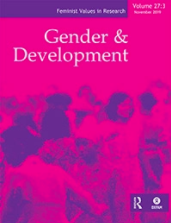The Roadmap Towards Gender Transformation in the Kampala Declaration and the CAADP Ten-Year Implementation Plan and Strategy (2026-2035): Defining Africa’s response metrics in the third iteration of the Comprehensive Africa Agriculture Development Programme

Overview
The newly launched 10-year Comprehensive Africa Agriculture Development Programme (CAADP) Strategy and Action Plan (2026–2035) represents a crucial initiative for enhancing productivity and fostering cohesive agricultural development throughout the continent. The forthcoming results framework for this strategy will lay out the objectives to be pursued in the transformation of the agriculture sector and will serve as a strategic guidance and measurement tool for harmonizing growth in agricultural value chains across Africa. This report aims to enhance the accountability and outcomes of this results framework by ensuring that African development initiatives adequately recognize and support women’s rights and contributions. Several significant barriers currently obstruct progress in this area, including lack of gender-disaggregated data, limited engagement by women in formulating policies, women’s poor access to financial resources, and deeply entrenched cultural constraints.
Using gender-sensitive indicators, policymakers can foster targeted interventions aimed at promoting gender equality in agricultural policies. The recommendations highlighted in this document take into account the critical role of women and youth in advancing Africa’s agri-value chains. This report calls for the new CAADP Strategy and Action Plan (2026–2035) to align with (and then measure for) the gender priorities envisioned in pan-African gender blueprints, which aim to create equitable opportunities for all genders across various sectors, including agriculture, as exemplified by the African Union’s Strategy for Gender Equality and Women’s Empowerment. This aspiration aligns with the broader ambitions articulated in regional frameworks such as Africa’s Agenda 2063 and the Malabo Declaration on Accelerated Agricultural Growth and Transformation for Shared Prosperity and Improved Livelihoods in Africa.
Keywords
Additional details
Author(s)
Publisher(s)
DOI
10.21201/2025.000066How to cite this resource
Citation styles vary so we recommend you check what is appropriate for your context. You may choose to cite Oxfam resources as follows:
Author(s)/Editor(s). (Year of publication). Title and sub-title. Place of publication: name of publisher. DOI (where available). URL
Our FAQs page has some examples of this approach.
Feminist Principles


